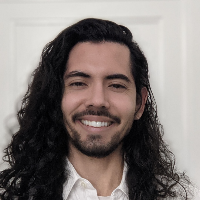3rd International Conference on
Ophthalmology & Vision Science
June 04-05, 2026 | Paris, France

IOVS 2026

Pennsylvania State University, USA
Abstract:
Dry eye syndrome
(DES) often correlates with the prevalence of diabetes. One underlying factor
is a dysfunctional lacrimal functional unit (LFU) consisting of lacrimal
glands, conjunctiva, and corneal epithelium, that are responsible for tear
production and tear homeostasis. Naltrexone
(NTX) is an opioid receptor antagonist that blocks the Opioid Growth Factor
receptor (OGFr), and when used topically to treat dry eye in Type 1 diabetic
(T1D) rats, restores corneal epithelial sensitivity and tear production to
normal levels within days of the initiation of therapy. The mechanism of this
action is not known. One hypothesis is that
elevated OGF levels in
diabetes alter the morphology and function of the
LFU, and that topical NTX blocks OGF-OGFr interaction thereby reversing LFU complications. Adult male and female
rats were rendered hyperglycemic and considered T1D after 6 weeks. Ocular
complications of dry eye and reduced
sensitivity were recorded
prior to treatment. Cohorts of each sex were randomized to receive
topical NTX (5 x 10-5 M) twice daily for ten days. The next day, dry
eye and corneal sensitivity in T1D+NTX rats were comparable to normal
animals. OGFr levels remained elevated
in plasma and ocular
tissue of all T1D animals. LFU tissue was harvested for morphology and had
decreases in number and size of lacrimal gland acini (p<0.001) and Meibomian
glands (p<0.001) in T1D rats relative to normal animals. Ten days of NTX did
not reverse these deficits suggesting that NTX-mediated reversal of dry eye may
involve neuronal mechanisms
Biography:
David Diaz has completed his Master of Science degree in Anatomy in 2021 from Case Western Reserve University and is currently in the PhD program in Anatomy at Penn State College of Medicine. His research interests involve understanding mechanisms related to dysregulation of the OGF-OGFr regulatory axis and ocular complications in diabetes. David is also an active teacher of human gross anatomy to medical students, physician assistant students, and undergraduates.
